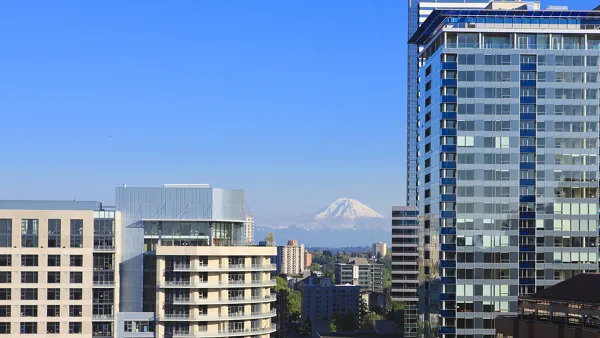The latest Upshot by Emily Badger looks at why American cities with the greatest economic opportunity no longer attract the population increases of yore

North Dakota was the exception. Riding an oil boom earlier this decade, some counties in North Dakota correspondingly had significant population and household growth. Otherwise, since 2000, metro areas in the United States with the most prosperity don't have the most growth.
In the latest Upshot in the New York Times, Emily Badger reports that, historically, boomtowns had correspondingly high growth rates. Chicago in the late 1800s, Detroit between 1910 and 1930, Los Angeles in the 1920s, and Houston after 1950 all experienced a swelling population as economic development took off.
Why is this? Many coastal cities, for example, have land use restrictions and actual land shortages that inhibit growth. One solution is to reduce the barriers to the creation of more housing in the most prosperous and expensive cities, which is both a political and economic challenge. Badger concludes that the federal government does not have the power to do this, but local cities and suburbs do.
FULL STORY: What Happened to the American Boomtown?

Analysis: Cybertruck Fatality Rate Far Exceeds That of Ford Pinto
The Tesla Cybertruck was recalled seven times last year.

National Parks Layoffs Will Cause Communities to Lose Billions
Thousands of essential park workers were laid off this week, just before the busy spring break season.

Retro-silient?: America’s First “Eco-burb,” The Woodlands Turns 50
A master-planned community north of Houston offers lessons on green infrastructure and resilient design, but falls short of its founder’s lofty affordability and walkability goals.

Test News Post 1
This is a summary

Analysis: Cybertruck Fatality Rate Far Exceeds That of Ford Pinto
The Tesla Cybertruck was recalled seven times last year.

Test News Headline 46
Test for the image on the front page.
Urban Design for Planners 1: Software Tools
This six-course series explores essential urban design concepts using open source software and equips planners with the tools they need to participate fully in the urban design process.
Planning for Universal Design
Learn the tools for implementing Universal Design in planning regulations.
EMC Planning Group, Inc.
Planetizen
Planetizen
Mpact (formerly Rail~Volution)
Great Falls Development Authority, Inc.
HUDs Office of Policy Development and Research
NYU Wagner Graduate School of Public Service



























